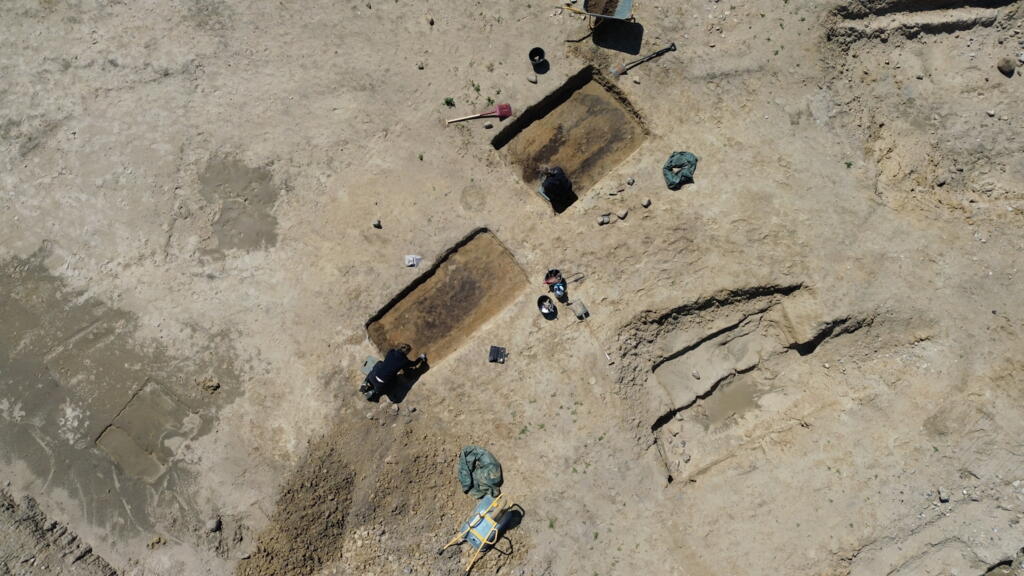Discovery of Viking Age Graves Near Aarhus, Denmark
In a remarkable archaeological find, approximately 30 graves from the Viking Age have been uncovered by chance during a construction project in Lisbjerg, located near the city of Aarhus, Denmark. This significant discovery, which includes a diverse array of artifacts such as pearls, coins, ceramics, and a box containing gold thread, has prompted immediate interest and investigation by professional archaeologists.
The burial site is believed to be the resting place of individuals from a noble family, possibly dating back to the reign of King Harald Bluetooth in the 10th century AD. King Harald Bluetooth is known for his efforts in unifying Denmark and converting the country to Christianity, making this era particularly significant in Scandinavian history.
Among the artifacts unearthed, the presence of pearls and gold thread points to the wealth and status of those buried at the site. The coins, which are often associated with trade and economic activity, further suggest that the individuals had a prominent role within their community. The ceramics would provide insights into the daily lives and customs of the time, reflecting the material culture and artistic expressions prevalent during the Viking Age.
The excavation of these graves not only sheds light on the social structure of Viking society but also allows researchers to gather more information about burial practices and funerary rituals. The location and composition of the graves imply a complex understanding of social hierarchy, suggesting that the deceased were likely important figures within their society.
Archaeologists are particularly excited about the implications of this find, as it enriches the narrative of Denmark's Viking Age history. Each artifact provides a piece of the puzzle that helps historians and archaeologists piece together the lives of people from this remarkable period. The discovery demonstrates the importance of thorough archaeological assessments, even in areas where construction and development are taking place.
As the investigation continues, researchers are hopeful that further analysis of the site and its contents will reveal more about the interactions, trade networks, and cultural practices of the Viking Age inhabitants of Denmark. Future studies may include the examination of the individual remains, which could provide valuable insights into health, diet, and the lifestyles of those from this historically rich era.
The chance discovery of this Viking burial site serves as a reminder of the ongoing potential for new archaeological revelations in regions where historical significance may not be immediately apparent. The findings from Lisbjerg highlight the importance of preserving and studying such sites, contributing to our broader understanding of Viking history and their lasting impact on Scandinavian culture.












